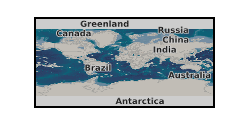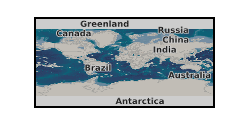Energy conservation
Type of resources
Topics
Keywords
Contact for the resource
Provided by
Years
Update frequencies
-

The CASSEM project developed new methodologies, workflows and insights essential for the successful identification and evaluation of safe and effective CO2 storage sites in offshore saline aquifers. The project selected on-shore and/or near-shore sites from which useful analogue data and information was obtained in order to characterise important aquifer and cap rock systems. Such onshore data acquisition enables key information to be gathered (through outcrop and/or borehole sampling) at much lower cost than could be achieved for long-term offshore storage options.
-

Carbon Capture and Storage (CCS) is a crucial technology to enable the decarbonisation of fossil fuel electricity generation. The UK has considerable potential for geological storage of CO2 under the North Sea and extensive offshore industry experience that could be applied. While initial storage is likely to be undertaken in depleted oil and gas fields, much larger saline aquifer formations are estimated to have sufficient capacity to securely contain 100 years of current UK fossil fuel power plant CO2 emissions. The CO2 Aquifer Storage Site Evaluation and Monitoring (CASSEM) project brings together the experience and different working practices of utilities, offshore operators, engineering contractors, and academic researchers to build collective understanding and develop expertise. CASSEM produced both new scientific knowledge and detailed insight into the CCS industry, developing best-value methods for the evaluation of saline aquifer formations for CO2 storage. Alongside work to assess the storage potential of two saline aquifer formations in close proximity to large coal power plant, CASSEM applied a novel Features, Events and Processes method to explore perceptions of risk in the work undertaken. This identified areas of industry and research community uncertainty and unfamiliarity to enable targeted investment of resource to reduce overall project risk. An openly accessible and flexible full chain (CO2 capture, transport and storage) costing model was developed allowing the CCS community to assess and explore overall costs. CASSEM's work also included the first use of citizen panels in the regions investigated for storage to assess public perception and educate the general public about CCS. CASSEM now plans to apply and further develop the methodologies established to test the viability of using a large offshore saline aquifer to store CO2 from multiple sources, leading to the proving of such a store by test injection of CO2.
 NERC Data Catalogue Service
NERC Data Catalogue Service